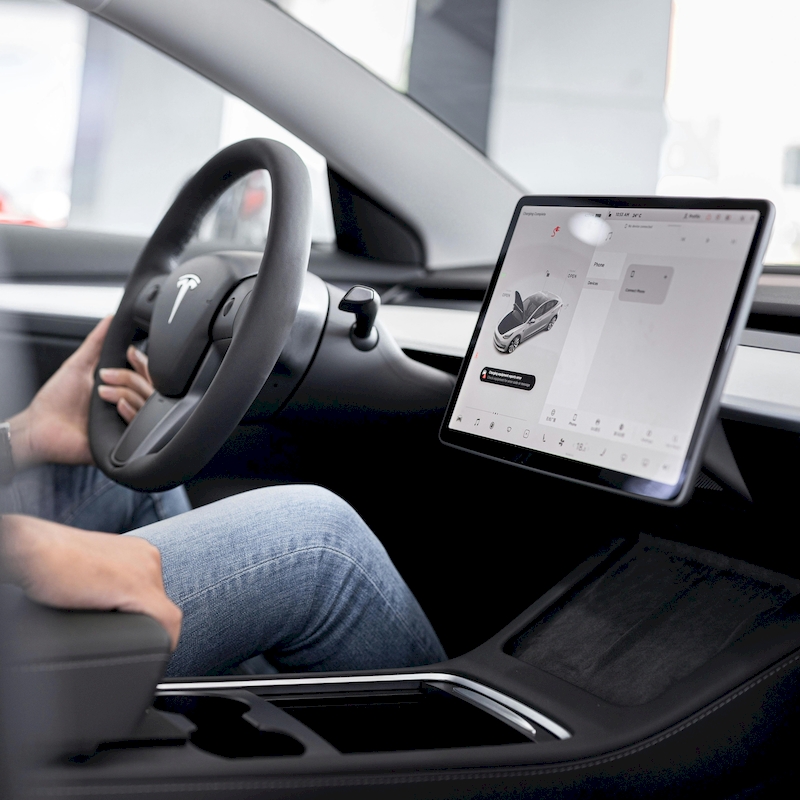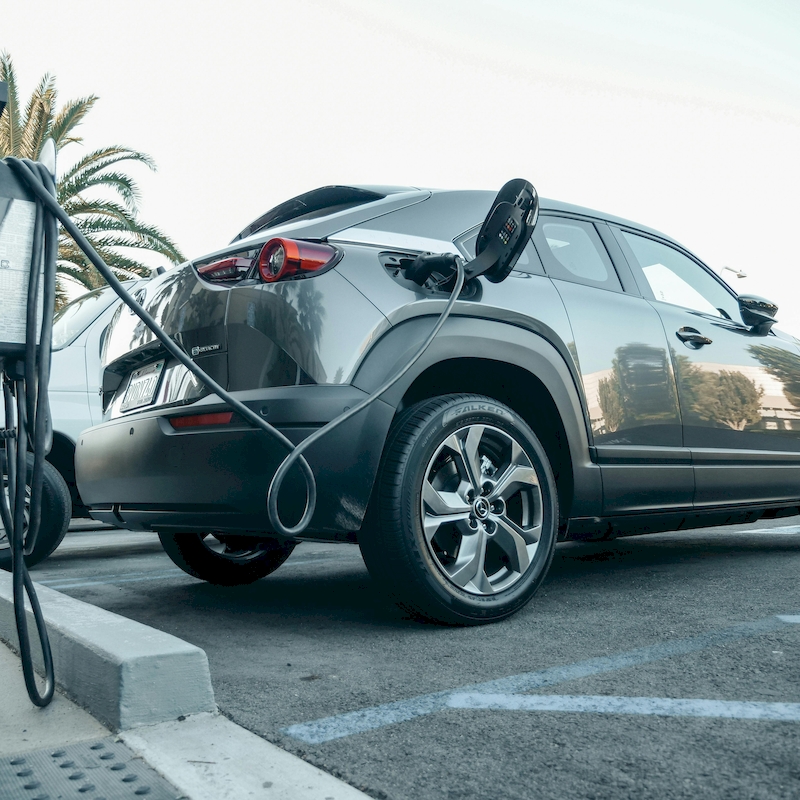Electric vehicles (EVs) have revolutionized transportation, offering a cleaner, quieter, and more efficient alternative to traditional internal combustion engines. One fascinating aspect of EVs that has garnered significant attention is the sound they make. Unlike conventional vehicles, which emit a distinctive roar or hum from their engines, electric vehicles are notably quieter, prompting critical conversations regarding safety, design, and user experience. The sound made by electric vehicles is not merely a matter of aesthetic appeal; it holds vital implications for pedestrian awareness, branding, and even the driving experience. This article delves into the intricate relationship between electric vehicles and sound, exploring why these sounds matter, how they are designed, and the future of automotive acoustics.

Understanding the Need for Sound
The primary reason for sound in electric vehicles revolves around safety. Research indicates that pedestrians, especially those who are visually impaired, rely significantly on auditory cues to navigate their environment. With the reduced noise levels of EVs compared to conventional cars, the risk of accidents increases. The absence of engine noise could lead to scenarios where pedestrians fail to notice an approaching vehicle. To address this issue, regulations in several countries now mandate that electric vehicles produce an artificial sound when traveling at speeds below a certain threshold—typically around 20 km/h (12 mph). This requirement reflects a concerted effort to ensure that electric vehicles remain accessible without compromising safety.
Additionally, the auditory characteristics of electric vehicles can enhance the overall driving experience. Just as the roar of a muscle car can evoke feelings of power and speed, the sound made by electric vehicles can be engineered to foster emotional connections between drivers and their cars. As manufacturers grapple with these challenges, a new dimension of vehicle design emerges—one where sound engineering plays a pivotal role.
The Science of Sound Design
Creating a sound for electric vehicles is not a simple task. Sound designers and engineers must collaborate to develop an auditory identity that resonates with various stakeholders, including manufacturers, drivers, and pedestrians. This process entails considering various design elements—such as pitch, volume, and tonal quality—that contribute to the unique sound profile of each vehicle.
Sound can be defined scientifically in terms of its frequency, amplitude, and timbre. Frequency refers to the speed of sound waves; higher frequencies produce those sharp, piercing sounds, whereas lower frequencies yield deep, rumbling noises. For electric vehicles, designers often opt for mid-range frequencies, which are more audible and less jarring. The amplitude, or loudness, is also crucial, as it must strike a balance between being detectable in urban settings while avoiding excessive noise pollution.
Furthermore, there are various approaches to creating sounds for electric vehicles. Some manufacturers might lean towards an artificial sound—crafted specifically for their brand—while others might choose to adopt more conventional auditory cues. The development of these sounds can thus lead to a unique acoustic identity, shaping the brand’s ethos in the minds of consumers.

Regulatory Landscape Surrounding Vehicle Sounds
The global automotive industry has faced increasing scrutiny regarding the sound made by electric vehicles. In response, regulatory bodies in countries like the United States and European Union have enacted legislation that affects how sounds are integrated into EV design.
For instance, the National Highway Traffic Safety Administration (NHTSA) in the United States mandated in 2016 that electric and hybrid vehicles must produce a minimum sound when moving at low speeds. Similarly, the European Union established a regulation that requires electric vehicles to generate an Acoustic Vehicle Alerting System (AVAS) sound below 20 km/h. Such regulations aim not only to improve pedestrian safety but also to maintain a sense of consistency in sound across all vehicles on the road.
Additionally, manufacturers strive to meet and exceed these regulatory standards. Companies are investing in research and development to create sounds that not only comply with regulations but also enhance brand identity. This presents an exciting opportunity for automotive engineers and sound designers to innovate freely, discovering new ways to integrate sound into the driving experience.
Electric Vehicles as a Canvas for Creativity
The sound made by electric vehicles is a new frontier for engineers and designers—an area rich with possibilities for experimentation. As creative professionals explore different auditory landscapes, they can envision soundscapes that redefine our understanding of automotive acoustics.
Several companies have ventured into this realm with groundbreaking success. For example, BMW introduced its “IconicSounds Electric” initiative, developed in partnership with renowned composer Hans Zimmer. This collaboration resulted in distinctive sounds that not only fulfill safety requirements but also evoke emotional responses, enriching the experience of driving an electric vehicle. Such artistic endeavors challenge the traditional view of automotives as purely mechanical instruments, placing emphasis on them as art forms that engage our senses.
Other manufacturers have taken a more playful approach, opting for sounds that elicit a sense of joy or excitement. This includes the adoption of whimsical sounds that mimic nature—the rush of wind or the chirping of birds—integrating society’s broader context into vehicle design.
As the notion of sound in electric vehicles continues to evolve, we may witness a golden age of sonic innovation, where vehicles can be tailored not only to serve functional purposes but also to imbue a sense of identity and aesthetic appeal.
Future Trends and Technologies in Vehicle Sound
Looking forward, the sound made by electric vehicles will likely evolve in tandem with technological advancements and societal expectations. The advent of smart technologies, automated driving, and increased vehicle connectivity presents unique opportunities and challenges in sound design.
One anticipated trend is the incorporation of adaptive sound systems that adjust based on the environment. For example, an electric vehicle traveling in crowded urban areas may utilize sounds that are more pronounced to alert pedestrians, while transitioning to quieter sounds in residential areas to minimize disturbances. Vehicle-to-everything (V2X) communication, which allows vehicles to interact with traffic signals, other cars, and pedestrians, may also influence sound design strategies. As machines learn to communicate effectively with humans, the role of sound as a medium of interaction will play a pivotal role in enhancing road safety.
Moreover, as electric vehicles continue to gain market share, public sensitivity toward noise pollution may drive discussions around sound volume and quality. Concepts such as soundscapes or sonic branding could emerge, further letting manufacturers explore innovative ways individuals perceive sound in their lives.
The future of the sound made by electric vehicles will hinge not only on design but also on cultural shifts related to how we perceive sound and its implications for our safety, wellbeing, and environment.

Conclusion
The sound made by electric vehicles is more than a mere byproduct of engineering; it is an essential element that merges safety, innovation, and emotional appeal. As we navigate through a world increasingly populated by electric vehicles, it is critical to recognize the importance of sound in shaping our driving experiences and overall interactions with these machines. From regulatory frameworks that guide sound design to creative endeavors that redefine auditory identity, the landscape of vehicle sound is both nuanced and dynamic.
The future holds exciting possibilities as the automotive industry continues to innovate. By fostering collaboration between engineers, sound designers, and regulators, manufacturers can create meaningful auditory experiences that enhance vehicle safety and emotional connection. Ultimately, as electric vehicles solidify their place in our modern world, the sounds they make will become integral to our perception of them, creating deeper relationships across people, technology, and the environment.



